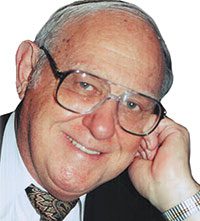Successful businesses need key people: How to get 'em and keep 'em
The heart of every successful business (Success Co.) — particularly if it is growing — is leadership. Usually, the clear leader is the owner/entrepreneur (Joe) who founded Success Co.
Over the years, Joe has built a management team. Typically, each member of the team is responsible for some significant aspect of Success Co. Oftentimes, one member of the team has already been assigned by Joe to take over the day-to-day operating problems/decisions of the business.
Then it happens: Sam (one of the key members of the management team) gives notice. He's leaving. Where? To a competitor. Ouch!
Sam was not looking to leave. He was recruited by a headhunter. Gone, a key guy of a well-working management team. Worse yet, Sam — who knows all the Success Co. secrets and strategies — is now a competitor who was trained by you.
Sorry, you can't stop the headhunters from hunting. But there is a proven strategy for you to keep the Sams in your organization from jumping ship.
How?
"Mimic ownership" — give 'em the same challenges as an owner and when successful, the rewards of ownership. Over the years, experience has taught us that the top (non-owner) executives want four core benefits of ownership:
• A piece of the action (a share of company profits)
• Get paid when they are sick or become disabled
• Receive adequate retirement pay when it's time to leave the company
• Death benefits for their family ("Like my piece of the equity if I get hit by a bus," or similar words, is the way most executives put it.)
Over the years we have created hundreds of contracts that attract and keep the kind of key people you want in your organization. (The technical name is a “nonqualified deferred compensation agreement." The non-technical name is a “golden handcuff agreement.")
Let’s take a closer look at each of the four desired benefits:
1. A piece of the action. Typically, this is a percentage of the profits in excess of a specific dollar amount. Often, the percentage grows as the profits grow. For example, Ed Hustle will get four percent of all before-tax profits in excess of $200,000 per year. Profits in excess of $400,000 will be entitled to six percent. Say the amount earned under the plan for year one (or any subsequent year is $21,000). Sam may get about one-third ($7,000) in cash, and the balance ($14,000) is deferred.
The deferred portion is invested for Sam’s benefit. When does Sam get the deferred portion and the accumulated earnings (usually called the side fund)? When the employee becomes disabled, dies or reaches retirement age (around 58 for younger key employees and in the 65-age range for older key people). When the key employee becomes entitled to collect the side fund (say it is $500,000), it usually is paid out in equal annual installments (say 10 years) or $50,000 per year plus the additional investment earnings for that year.
2. Disability. The employee gets paid when sick or disabled — whether for a day or for a lifetime. Typically, this benefit is covered by long-term disability insurance. It is essential that “disability” be defined “word for word” in your agreement; the same as it is defined in the disability insurance contract.
3. Retirement. The side fund (described in 1 above) supplements any regular retirement program (like a 401(k) or profit-sharing plan). Typically, the executive is allowed to direct the investment of the side-fund, which — until paid to the employee — remains an asset of the employer.
What are the tax consequences of the arrangement? The side fund earnings are taxable to the employer. When the employee receives a distribution, the company gets a deduction for the exact amount distributed, and the employee must report the identical amount as taxable income.
If the employee leaves for any reason — except because of disability, death or retirement — the entire side fund is forfeited and remains the property of your company. Hence, the name, “golden handcuffs.”
4. Set amount of money at death. When an owner dies, the family can sell the business (assuming it is not transferred to the kids). A similar benefit (really a death benefit) is given to the employee and should be insurance funded.
We have been doing these non-qualified plans for years. Done right, they work wonders. Often, when an owner does not have a family member to pass the business to, the side fund serves as the down payment by one or more of the key people to buy the business from the owner.
Two warnings
• This article does not attempt to cover every detail and the endless variations for tailoring an agreement that is perfect for your company and the key people you want to include. Always, and we mean always, work with an experienced advisor. Years of experience has proved that the right agreement will make your good people even better;
• But sadly, there is no agreement we have ever seen that will make a bad employee even a little bit better.
Do you have a question or want to discuss the unique situation for your key employees? Call Irv at 847-674-5295.
Irv Blackman, CPA and lawyer, is a retired founding partner of Blackman, Kallick, Bartelstein LLP and chairman emeritus of the New Century Bank (both in Chicago). Want to consult, need a second opinion? Call Blackman at (847) 674-5295. E-mail him at blackman@estatetaxsecrets.com or visit www.estatetaxsecrets.com.





